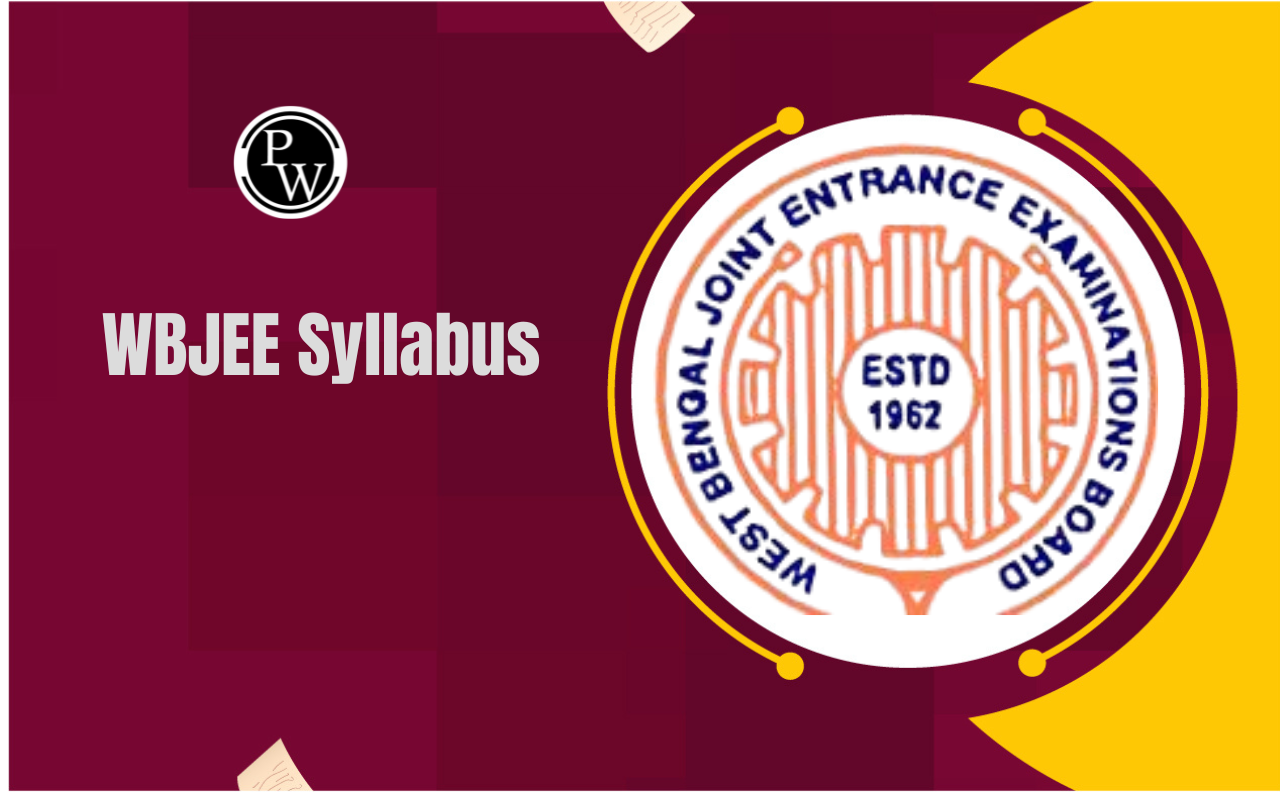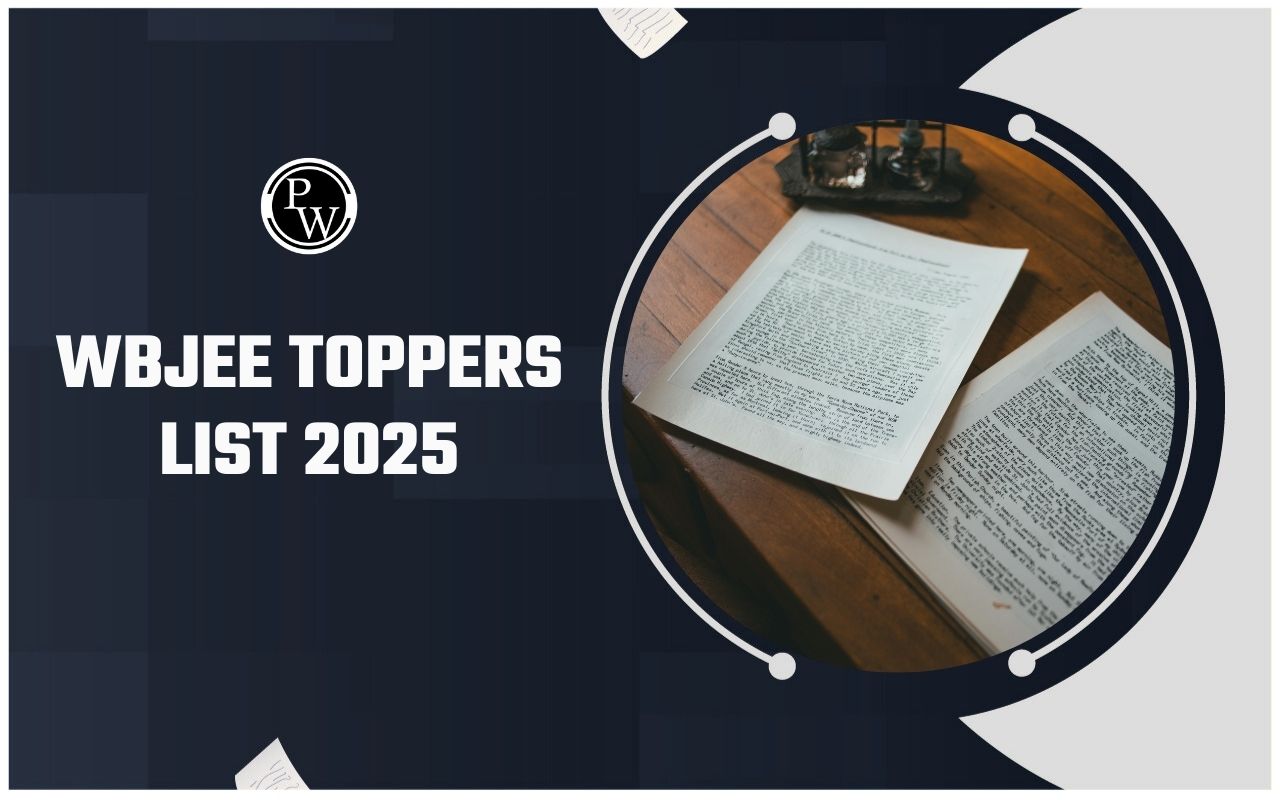
WBJEE Physics Syllabus 2025 : The West Bengal Joint Entrance Examination Board (WBJEEB) will release the official WBJEE Physics Syllabus 2025 by the end of December 2024. This syllabus, aligning with topics from the 11th and 12th standards, will cover essential physics concepts. The detailed syllabus, including subjects, units, and topics, will be available in PDF format on the official WBJEE website.
Understanding the syllabus is crucial for candidates as it allows them to plan their studies effectively and excel in the examination. If there are any changes, updates will be provided here. Meanwhile, candidates can prepare using the existing syllabus, as changes are rare. The WBJEE exam 2025 is scheduled for the last week of April 2025, helping students prepare effectively.WBJEE Rank Wise College List 2024
WBJEE Physics Syllabus 2025 Overview
The WBJEE Physics Syllabus 2025 provides a structured outline of all key physics concepts essential for the exam. This overview helps students understand the main topics and areas they need to focus on.| WBJEE Physics Syllabus 2025 Overview | |
|---|---|
| Parameters | Description |
| Number of Questions | 40 questions in the Physics section |
| Syllabus Division | Breakdown of the syllabus into key sections covering fundamental and advanced topics |
| Topics Covered | Comprehensive list of topics including physical world, kinematics, laws of motion, thermodynamics, and more |
| Exam Weightage | Distribution of marks, typically including categories with different marking schemes and negative marking policies |
| Mode | Pen and Paper Based (Offline) |
| Duration | 4 Hours |
| Total Number of Questions | Physics - 40, |
| Medium | English and Bengali |
WBJEE Physics Syllabus 2025
The WBJEE Physics Syllabus 2025 is designed to assess candidates' grasp of fundamental and advanced physics concepts. The syllabus includes a variety of topics essential for a thorough understanding of the subject. Students are encouraged to review all sections to ensure comprehensive preparation for the exam. The syllabus aims to provide a balanced approach, covering theoretical principles and practical applications, helping students to excel in the WBJEE examination.| WBJEE Physics Syllabus 2025 | |
|---|---|
| Topics | Sub-topics |
| Physical World, Measurements, Units & Dimensions | Units & Dimensions of physical quantities, dimensional analysis & its applications, error in measurements, significant figures |
| Kinematics | Scalars & vectors, representation of vectors in 3D, dot & cross product & their applications, equations of motion with uniform acceleration |
| Laws of Motion | Newton’s laws of motion, conservation of linear momentum, elastic & inelastic collisions, centripetal force, projectile motion & uniform circular motion |
| Work, Power, Energy | Work-energy theorem, power, energy, conservation of mechanical energy, conservative and nonconservative forces |
| Motion of Centre of Mass, Connected Systems, Friction | Centre of mass of two-particle system, torque, moments of inertia, conservation of angular momentum, friction and laws of friction |
| Gravitation | Kepler’s laws, universal law of gravitation, acceleration due to gravity, gravitational potential & PE, escape velocity, orbital velocity of satellites |
| Bulk Properties of Matter | Elasticity, Young’s modulus, pressure due to a fluid column, surface tension, viscosity, Bernoulli’s theorem |
| Heat & Thermal Physics | Heat & temperature, thermal expansion, ideal gas laws, specific heat capacity, heat transfer, Newton’s law of cooling |
| Thermodynamics | Thermal equilibrium, 1st and 2nd laws of thermodynamics, isothermal & adiabatic processes, reversible & irreversible processes |
| Kinetic Theory of Gases | Equation of state of a perfect gas, assumptions in Kinetic theory of gases, law of equipartition of energy, mean free path, Avogadro number |
| Oscillations & Waves | Simple harmonic motion, energy in S.H.M, wave motion, longitudinal & transverse waves, sound waves, Doppler effect |
| Electrostatics | Coulomb’s law, electric field & potential, Gauss’ theorem, capacitors & capacitance, energy stored in a capacitor |
| Current Electricity | Electric current, Ohm’s law, electrical resistance, electrical energy & power, Kirchhoff’s laws, Wheatstone bridge, meter bridge |
| Magnetic Effect of Current | Oersted’s experiment, Biot-Savart law, Ampere’s law, force on a moving charge, force on a current-carrying conductor, moving coil galvanometer |
| Magnetics | Magnetic dipole moment, magnetic field intensity, torque on a magnetic dipole, Earth’s magnetic field, para-, dia- & ferro-magnetic substances |
| Electromagnetic Induction & Alternating Current | Faraday’s laws, Lenz’s Law, alternating currents, reactance and impedance, LCR series circuit, power in AC circuits |
| Electromagnetic Waves | Characteristics of electromagnetic waves, electromagnetic spectrum, applications of different parts of the spectrum |
| Optics I (Ray Optics) | Reflection and refraction of light, lenses, optical instruments, human eye, correction of eye defects, microscopes & telescopes |
| Optics II (Wave Optics) | Scattering of light, wave front & Huygens’ principle, Young’s double slit experiment, Fraunhofer diffraction, photoelectric effect, wave-particle dualism |
| Atomic Physics | Rutherford’s nuclear atom model, Bohr model of hydrogen atom, energy levels, hydrogen spectrum, x-rays |
| Nuclear Physics | Radioactivity, radioactive decay law, mass-energy relation, nuclear fission & fusion |
| Solid State Electronics | Energy bands in solids, semiconductor diode, LED, photodiode, solar cell, Zener diode, junction transistor, logic gates |
Roadmap of WBJEE for Class 10 Students
WBJEE Physics Syllabus 2025 PDF Free Download
The WBJEE Physics Syllabus 2025 PDF Free Download link will benefit WBJEE students by allowing them to download the entire syllabus. Accessing the complete syllabus will enable students to prepare more effectively for the WBJEE exam, ensuring comprehensive coverage of all necessary topics.WBJEE Physics Syllabus 2025 PDF Free Download Link
WBJEE Physics Syllabus 2025 Chapterwise Weightage
The WBJEE Physics Syllabus 2025 Chapterwise Weightage provides detailed information on the importance of each chapter in the exam. Understanding the weightage helps students prioritize their study plan, focusing on chapters with higher marks allocation to optimize their preparation and performance in the WBJEE exam.| WBJEE Physics Syllabus 2025 Chapterwise Weightage | |
| Important topics | Chapter Weightage |
| Wave Motion | 5% |
| Nuclear Physics | 5% |
| Solids & Semiconductor Devices | 5% |
| Modern Physics – Atomic Models | 5% |
| Laws of Motion | 4% |
| Rotational Motion | 4% |
| Current Electricity | 7% |
| Heat and Thermodynamics | 6% |
| Electrostatics | 6% |
| Magnetic Effects of Current and Magmatism | 6% |
| Work Energy Power | 5% |
| Simple Harmonic Motion | 5% |
| Physics of Nucleolus | 5% |
What is GMR and PMR in WBJEE 2024
WBJEE Physics Syllabus 2025 Important Topics
The WBJEE Physics Syllabus 2025 Important Topics section highlights the key areas that students should focus on. Emphasizing these topics will aid in efficient and targeted preparation, ensuring that candidates can perform well in the examination.-
Laws of Motion
-
Electrostatics
-
Current Electricity
-
Heat & Thermodynamics
-
Physics of Nucleus
-
Work Energy Power
-
Modern Physics -Atomic Models
-
Wave Motion
-
Simple Harmonic Motion
-
Magnetic Effect of Current & Magnetism
-
Solids & Semiconductor Devices
-
Centre of Mass, Impulse & Momentum
-
Rotational Motion
| Other Links Related to WBJEE 2025 | |
| WBJEE 2025 | WBJEE Syllabus 2025 |
| WBJEE Apply Online 2024 | WBJEE Eligibility Criteria 2024 |
| WBJEE Previous Year Question Papers | |
WBJEE Physics Syllabus 2025 FAQs
What are the important chapters for WBJEE 2025?
Is the syllabus reduced for JEE 2025?
What is the syllabus for WBJEE Physics 2024?
Is WBJEE harder than JEE Mains?
Is WBJEE easy to crack?










